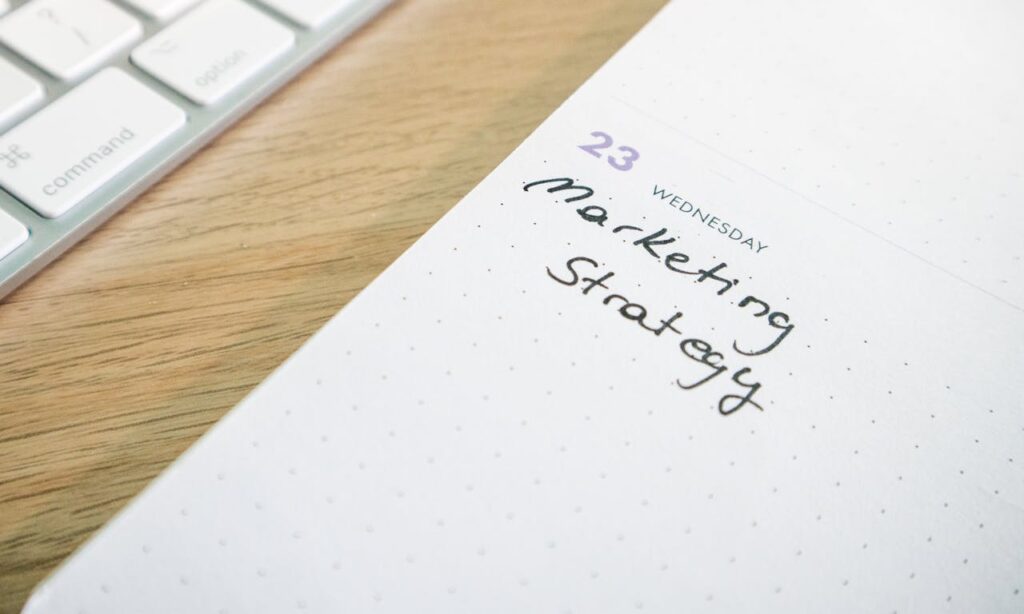Quick Links:
Listen, I know this article is a doozy, so before your blood pressure rises too much, feel free to skim the list of topics we’ll be addressing below and simply pick and choose what seems most relevant for you at this time. And don’t forget to contact us with any specific questions you might run into down the road. Enjoy!
- Common Misconceptions: What Do People Think They’re Getting with SEO?
- What Are You Really Getting with SEO?
- Is SEO Worth the Hype?
- How Does SEO Compare to Google Ads and Social Media Marketing?
- What is a Realistic Timeline for SEO?
- What Does SEO Cost Compared to Other Marketing Channels?
- What Exactly Am I Paying For?
- When is SEO the Right Call for a Business?
- When is SEO not the Ideal Solution for a Business?
- What Would the DIY Route for SEO Actually Look Like?
- What Sort of SEO Packages or Offerings Can I Choose From?
- How Long Will It Take to Experience Results?
- What SEO Red Flags Should I Look Out For While I Interview Agencies?
- What is the Next Step in Pursuing SEO for My Business?

Demystifying SEO
Hey there! Imagine we’re sitting down together at your favorite coffee shop. You take a sip of your latte and lean in, asking, “So, is this whole SEO thing really worth it?” If that’s the kind of friendly, no-judgment conversation you’re looking for, then welcome—you’re in the right place. Let’s break it down by first looking at what many people think they’re getting when they hire someone to do SEO, and then contrast that with the reality of what SEO actually involves. Finally, we’ll chat about why taking the time to understand SEO might be one of the savviest moves for your business.
What Do People Think They’re Getting With SEO?
A lot of folks picture SEO (Search Engine Optimization) as a silver bullet: you flip a switch, and—poof!—your website magically appears at the top of Google results the next morning. They might assume that hiring an SEO specialist means you pay a flat fee, get a few pages tweaked, and then just watch new leads pour in with zero effort. There’s also an expectation that results are immediate and guaranteed, like a hot new product that everyone rushes to buy.
But if you’ve ever waited for your coffee to cool just enough so you don’t scorch your tongue, you know that good things often require a bit of patience. The same holds true for SEO.
What Are You Really Getting With SEO?
Here’s the real story: SEO is more like a slow-brew process. You’re building a relationship with search engines—Google, Bing, and so on—by proving your website is trustworthy, relevant, and easy to use. That trust doesn’t happen overnight. Instead, it’s earned through consistent improvements in your site’s content, structure, and authority (like getting reputable sites to link back to you).
When you invest in SEO, you’re paying for the expertise of someone who understands how search engines evolve, keeps an eye on algorithm changes, and can adapt your strategy accordingly. You’re also tapping into a system that looks at your audience’s needs: What are people typing into that Google search box? What questions are they asking? How do you address those questions better than your competitors?
Sure, it’s more involved than flipping a switch, but that’s also what makes it sustainable. By focusing on the quality of your site and the usefulness of your content, you set yourself up for long-term, organic traffic that doesn’t require you to keep feeding a pay-per-click meter.

Why SEO Is Worth Understanding
So, why bother digging into the details? Because search engines play a massive role in how new customers discover you. If your site isn’t optimized for those who are actively looking for what you offer, you could be missing out on a whole chunk of potential business—and let’s face it, competing for attention on the internet can feel like shouting into a crowded room if you’re not strategic about it.
By understanding the basics of SEO—like how to research the right keywords or how to structure your content—you gain the power to make informed decisions. Even if you ultimately hire a professional to handle the nitty-gritty, you’ll be able to ask the right questions and see the bigger picture. Think of it as learning just enough about coffee brewing to appreciate a barista’s craft. You don’t have to become a barista yourself, but you’ll know the difference between a good cup of coffee and one that’s, well, lukewarm at best.
That’s the quick overview of what people expect from SEO versus what really goes on behind the scenes. Next, we’ll explore how SEO compares to other marketing channels and why it’s considered a long-term game rather than a short sprint. For now, just remember: SEO is about building credibility and serving your audience’s needs better than anyone else out there. And while that doesn’t happen in a day, it’s one of the most rewarding investments you can make for the future of your business.
SEO vs. Other Marketing Channels
Picture this: you’re wondering whether SEO is really the best place to spend your marketing dollars, or if Google Ads or social media might give you faster, easier wins. It’s a fair question—after all, marketing budgets aren’t bottomless. So let’s compare these channels and figure out where SEO fits into the bigger picture of your business strategy.

How SEO Compares to Google Ads and Social Media
SEO: The Slow-and-Steady Marathon Runner
- Key Trait: Patience pays off.
- How It Works: You invest time and resources into optimizing your site, creating quality content, and building credibility with search engines. Over time, your pages can rank higher on search results, leading to consistent “free” traffic.
- Upside: Once you start ranking for key terms, you’re not paying per click—meaning each new visitor doesn’t come with an added bill.
- Downside: It takes months (sometimes longer) to see significant results, and you have to keep nurturing it.
- Industry Indicator:
- Ideal For: Businesses with long sales cycles, professional services, local businesses wanting steady foot traffic, or e-commerce stores seeking a sustainable, long-term strategy.
- Why: If your customers are actively searching for solutions over time (not just an impulse buy), SEO can be your best friend.
- A Realistic Budget Range:
- If you’re tackling SEO on your own, you might spend a few hundred to a couple thousand dollars per month on tools, training, and content production (not to mention the sweat equity of hours put in).
- If you hire a specialist or agency, expect monthly retainers starting around $1,000 to $3,000 for smaller/local businesses, and up to $5,000+ for more competitive national markets.
Google Ads: The Fast Sprinter
- Key Trait: Speedy results, at a price.
- How It Works: You bid on specific keywords, and your ads show up at the top of Google’s search results. Each time someone clicks, you pay.
- Upside: It’s like flipping on a light switch: as soon as you launch your campaign, you can appear at the top of the page—no waiting around for search engines to notice you.
- Downside: You’re on the hook for costs each time someone clicks, and once you stop paying, your visibility disappears. Also, competitive industries can lead to sky-high click costs.
- Industry Indicator:
- Ideal For: Businesses with short-term promotions, seasonal offerings, or high margins that can absorb the cost-per-click.
- Why: If you need leads right away—perhaps you have an event coming up or a clearance sale—Google Ads can put you in front of potential customers immediately.
- A Realistic Budget Range:
- Smaller local campaigns might be manageable with a budget of $500–$1,500/month, but results can vary widely based on competition.
- In more competitive industries or national campaigns, you might need $2,500–$10,000/month (or more) just in ad spend to see tangible returns—plus any management fees if you outsource the work.

Social Media Marketing: The Dynamic Networker
- Key Trait: Engagement and brand-building.
- How It Works: You share content, run ads, and interact with users on platforms like Facebook, Instagram, LinkedIn, or TikTok.
- Upside: You can directly engage with your audience, build a community, and humanize your brand. Some of your best leads might come from people who trust and follow you.
- Downside: Algorithms on social networks can change overnight. If you’re relying on organic reach alone, it’s tougher than ever to stand out. Ads can help you break through, but they still cost money, and performance can vary widely.
- Industry Indicator:
- Ideal For: Visual-heavy industries (e.g., fashion, fitness, interior design) or thought-leadership niches (e.g., consulting, coaching), and businesses that thrive on community interaction.
- Why: If your customers want to see your brand’s personality and you have a lot of engaging content or stories to share, social media can be a powerful channel to grow loyalty and rapport.
- A Realistic Budget Range:
- Organic Efforts: You can do a lot in-house with just a few well-trained team members and a consistent posting schedule, but plan on investing time in creating (and possibly designing) quality content.
- Paid Social Ads: Budgets can start around $300–$1,000/month for small tests, but you may need $2,000–$5,000+ monthly (or more) to see broader brand awareness and lead generation in highly competitive sectors.
Realistic Timelines and Expectations
If you’re looking for immediate returns—say you’ve just launched a product and need quick sales to pay the bills—SEO might not deliver in time, at least not by itself. Think of SEO as a strategy that, in many cases, really starts to pay off 3–6 months in, and can take a year or more to truly see its full potential.
- Short-Term Mindset: “I need leads now!” → Paid ads or targeted social ads might be your best bet.
- Medium- to Long-Term Mindset: “I want to build a solid foundation for future growth.” → SEO is the gift that keeps on giving if nurtured properly.
It’s all about balance. Many businesses run Google Ads to get immediate visibility while simultaneously investing in SEO for the long haul. They’ll also maintain a social media presence to stay engaged with their audience. Each channel has its own strengths and weaknesses, and the best approach often involves a blend—depending on your goals, budget, and timeline.
So, what’s the main takeaway?
SEO may not be the “fastest” kid on the marketing block, but its long-term benefits are hard to ignore. By taking the time to earn your website’s credibility organically, you position your business for sustained growth without the constant need to pay for every single click or impression.
Up next, we’ll dive deeper into what goes into the cost of SEO and why the return on that investment isn’t always linear—but can be well worth it in the end.
Investment and Pricing Overview
Let’s keep our conversation rolling—imagine we’ve just topped off our coffees and you ask, “So, how much should I actually budget for SEO, and what do I get for it?” It’s a great question, and the answer can feel like a moving target if you’re new to this space. Let’s break it down so you have a clearer idea of where your money goes and why the return on that investment can be tricky to nail down in the early stages.

Understanding Monthly SEO Costs
It’s Not One-Size-Fits-All
The price of SEO varies widely based on factors like:
- Your Industry (Are you in a competitive space like finance or real estate?)
- Your Location (Local vs. regional vs. national or global markets)
- The Scope of Work (Do you need a total site overhaul, or just some tweaking here and there?)
- The Level of Expertise you’re hiring (a solo consultant, a small boutique agency, or a full-scale digital marketing firm).
Here’s a ballpark look at monthly retainers you might encounter:
- Entry-Level / Local Focus: $500–$1,500 per month
- You’re probably a smaller business looking to rank in local searches (e.g., “coffee shops in Portland”).
- Expect foundational tasks like basic on-page optimization, local citations, and occasional content updates.
- Mid-Range: $1,500–$3,000 per month
- Typically includes a broader set of services like blog content creation, more robust keyword research, and ongoing link-building efforts.
- Suited for businesses with moderate competition or those wanting to expand beyond a single city.
- High-End or Competitive National Markets: $3,000–$10,000+ per month
- You’re likely in a highly competitive industry (think legal, medical, tech) or running an e-commerce site competing on a national scale.
- This often involves advanced SEO tactics, deeper technical audits, a content strategy aligned with a team of writers, and regular monitoring/reporting.
Why the Range?
Think about it like buying coffee beans: you can grab a standard blend or splurge on a top-tier specialty roast sourced from a single-origin farm. Both give you coffee, but the flavor depth and the overall experience can vary greatly. SEO, similarly, can be approached at different levels of complexity and expertise.
Budget Comparisons
SEO vs. Google Ads
- SEO: You’re investing in building up your website’s authority and content library. Over time, you can earn significant traffic without paying per click.
- Google Ads: You might spend $2,000/month on ad clicks—but it can produce fast results. The second you stop paying, though, your visibility goes away.
SEO vs. Social Media Marketing
- SEO: More systematic and data-driven around specific search terms people are using. Think of it as building an evergreen presence on the web.
- Social Media: Budget might go into content creation, sponsored posts, or ads. You’ll get engagement and brand awareness, but the nature of social feeds means content can be short-lived unless it goes viral.
In many cases, businesses find it’s not an “either/or” situation. They might say, “We’ll spend $1,000 on SEO each month to build our foundation, and then allocate another $1,000 to Google or Facebook ads for immediate visibility.” Over time, as your organic traffic grows, you can adjust your paid budget accordingly.
ROI: Why It Isn’t Always Linear
One of the trickiest parts about SEO is that it doesn’t follow a straight line of investment vs. return. Some months, you’re doing a lot of groundwork—optimizing the site, creating content, cleaning up technical issues—and you might not see an immediate jump in conversions. Then, a few months later, traffic can start to climb more noticeably as Google rewards your consistent improvements.
- Short-Term View: “I spent $2k on SEO this month; did I get $2k+ worth of sales from organic traffic?” That can be hard to answer right away.
- Long-Term View: “Over the past 6–12 months, our site traffic doubled. Now we consistently get more leads without increasing our budget.”
Think of it like planting seeds in a garden. You water them, give them sunlight, and keep the soil healthy. For a while, it looks like nothing is happening. But eventually, those seeds sprout, and the harvest can feed you for a good long time—far longer than if you just went to the store and bought some produce for a one-time meal.

Where Does the Money Actually Go?
- Tool Subscriptions & Software
- Your SEO pro likely subscribes to platforms for keyword research, rank tracking, and analytics. These can run hundreds (or thousands) of dollars each month.
- Content Creation & Optimization
- From blog posts to product descriptions, good writing takes skill and time—plus an understanding of how to weave in keywords naturally.
- Link-Building & Outreach
- Reaching out to reputable websites, forming relationships, and earning backlinks can be a slow (but essential) process.
- Technical Audits & Implementation
- Making sure your website is secure (HTTPS), fast-loading, mobile-friendly, and free from errors is a big part of SEO.
- Monitoring & Reporting
- A good SEO specialist is always keeping tabs on your site’s performance and making data-driven decisions.
In short, you’re not just paying someone to tweak a couple of keywords once or twice. You’re investing in a methodical, ongoing effort to make your website as visible and valuable to both search engines and real human visitors as possible.
Up next, we’ll explore some key questions to help you figure out if SEO is truly the right move for you, or if your business might be better off focusing on other channels right now. Remember, like any investment, it’s important to go in with realistic expectations—and a clear picture of what success looks like for your unique situation.
When SEO Makes Sense
1. You’re in it for the Long Haul
- Scenario: Your business model isn’t built around flash sales or super-quick returns. You’d rather nurture a consistent flow of leads or customers over time.
- Why SEO Works: As you consistently publish quality content and build authority, search engines learn to trust you. Over months (or even years), that trust translates into stable, organic traffic.
2. Your Audience Is Actively Searching
- Scenario: You know your customers typically find products or services like yours by going to Google and typing in keywords related to your industry.
- Why SEO Works: When there’s an existing demand in search engines, ranking for high-intent keywords can bring you incredibly relevant traffic.
3. Brand Awareness and Thought Leadership Matter
- Scenario: You’re a consultant, coach, or a niche expert looking to establish credibility. You’d love to be the go-to resource people find online.
- Why SEO Works: Publishing blog posts, guides, and articles that solve real problems shows search engines (and readers) you’re an authority. This positions you as a thought leader and grows your digital footprint over time.
4. You Need a Scalable, Sustainable Traffic Source
- Scenario: You don’t want to be reliant solely on paying for ads or hoping for a social media viral moment.
- Why SEO Works: While PPC and social media can be fantastic supplements, organic search is often the backbone of many successful digital strategies. Once you rank, you can enjoy traffic without paying per click.
When SEO May Not Be the Best Choice
1. You Need Immediate Sales
- Scenario: Your cash flow depends on making sales in the next few weeks, and you don’t have a runway to wait for organic traffic to build up.
- Why SEO Might Not Fit: SEO is more marathon than sprint. Paid ads or direct outreach could be more suitable if time is your biggest constraint.
2. Extremely Limited Budget
- Scenario: You’re struggling to allocate any funds toward marketing, and you can’t invest in content or even basic tools to keep track of your performance.
- Why SEO Might Not Fit: Without resources to create high-quality content, do consistent outreach, or fix technical issues, SEO can become an uphill battle. You might see better returns from smaller, hyper-targeted campaigns via Google Ads or local partnerships.
3. Highly Volatile or Very Niche Markets
- Scenario: You’re in an emerging or ultra-specific industry with barely any search volume (because people don’t know they need your product yet).
- Why SEO Might Not Fit: If folks aren’t searching for your solution—at least not in a consistent or substantial way—focusing on SEO might not yield the results you need. Consider more educational or awareness-based marketing to create demand first.
4. Short Product Lifecycles
- Scenario: You sell products that become obsolete or irrelevant very quickly (think trendy phone cases or fidget spinners).
- Why SEO Might Not Fit: Building authority around these keywords might take longer than the product’s lifespan in the market.
Making the Call
Choosing whether to invest in SEO isn’t always black and white—it depends on the unique realities of your business. If your customers are definitely Googling questions that relate to what you offer, and you’re prepared to let your strategy mature over several months, SEO can pay off handsomely. But if you’re in a pinch for immediate ROI or your industry isn’t exactly “search-friendly,” you might want to explore alternative or complementary channels (like paid advertising, direct outreach, or influencer partnerships).
Bottom Line
Think of SEO like a healthy lifestyle change rather than a crash diet. It takes consistent effort, but the results can be lasting, compounding, and incredibly rewarding. Up next, we’ll get real about the internal work required if you decide to go the DIY route—so you can see whether “doing it yourself” is an adventure you’re ready to take on, or if you’d rather bring in some backup.
Internal Work Required for DIY SEO
Let’s keep the friendly chat going. You might be wondering, “If I skip hiring an SEO pro and try to handle it all in-house, what exactly am I signing up for?” Great question! Picture yourself rolling up your sleeves to learn the ropes—because unlike a quick coffee run, SEO can be a daily grind if you take it on solo. Let’s explore the core skills you’ll need, the time commitment, and what a typical week might look like if you decide to do it all yourself.

Skillsets and Resources Needed
1. Basic Technical Know-How
- You don’t need to be a world-class developer, but you should understand how to manage your website’s backend. Things like installing plugins (if you’re on WordPress), setting up analytics, and fixing minor bugs can save you from constant “SOS” moments.
- You’ll also need a grasp of site speed, mobile responsiveness, and (ideally) knowledge of HTML/CSS basics.
2. Keyword Research & Strategy
- This is where you figure out what terms your customers actually use when searching for products or services like yours.
- Tools like Google Keyword Planner, SEMrush, or Ahrefs can help—though they come with monthly fees and a learning curve.
3. Content Writing & Editing
- A huge chunk of SEO comes down to creating valuable, keyword-focused content that resonates with your audience. If you’re not a strong writer, you may need to hire a freelance content writer or invest in writing courses.
- Remember: it’s not just about stuffing keywords—your content must truly help or educate the reader.
4. On-Page Optimization & Basic Design
- Knowing how to structure your content with proper headings (H1, H2, H3) and optimize meta titles and descriptions can be a game-changer.
- You’ll also want an eye for layout: is your site easy to navigate? Do your images have alt text? Are your internal links guiding people to relevant pages?
5. Link-Building & Outreach
- Earning quality backlinks (other reputable sites linking to yours) can boost your search rankings. This typically involves researching potential sites, crafting pitches, and building relationships.
- Think PR meets networking: it’s time-consuming, but crucial.
6. Analytics & Reporting
- Tracking your site’s performance through tools like Google Analytics and Google Search Console is essential. You’ll make data-driven decisions based on metrics like organic traffic, bounce rates, and conversions.
- Proficiency in spreadsheets and reporting platforms helps you spot trends and justify your time and monetary investments.
Realistic Time and Effort Commitments
Doing SEO yourself isn’t just a quick side project. While the exact time varies from business to business, here’s a ballpark look at what you might expect:
- Learning Curve: In your first few weeks or months, you’ll likely spend extra hours reading blogs, watching tutorials, or taking courses to wrap your head around SEO fundamentals.
- Ongoing Maintenance: After the learning phase, you’ll still need to dedicate time each week (commonly 10–30 hours, depending on how extensive your efforts are) to research new keywords, update content, monitor rankings, and more.
- Content Creation: Consistent blogging or page updates might mean writing, editing, and publishing multiple pieces a month. This can be a big chunk of your schedule if you’re also running other aspects of your business.
Think of it like training for a marathon: the first few runs might feel intimidating, but once you build a rhythm and create a routine, it becomes more manageable. Still, it requires ongoing dedication.
A Week in the Life of a DIY SEO
Let’s sketch out a hypothetical week. Of course, every business is different, but this scenario gives a glimpse of the workload:

Monday: Keyword Research & Content Planning
- Spend a few hours in your favorite SEO tool, uncovering keywords people are searching for in your niche.
- Draft a content calendar: which blog posts, landing pages, or product pages need updates this week or month?
Tuesday: Content Writing & Editing
- Dive into a blog post or a new page update. Write, rewrite, and ensure you’re naturally weaving in keywords.
- If you’re new to copywriting, this part can be slow going until you find your groove.
Wednesday: On-Page Optimization & Technical Checks
- Check your site’s speed, fix any broken links, and audit internal links.
- Update meta titles, descriptions, and heading tags. Make sure your pages are mobile-friendly.
Thursday: Outreach & Link-Building
- Research relevant industry sites or blogs you could potentially partner with.
- Craft personalized emails or DMs asking about guest posting opportunities or link placements.
- Prepare for some rejection or no responses—that’s part of the game!
Friday: Analytics Review & Strategy Adjustments
- Pop into Google Analytics and Search Console to see what changed this week.
- Look at bounce rates, time on page, and conversions. Are you hitting your goals, or do you need to pivot?
- Adjust your content calendar or outreach strategy based on data.
By Friday afternoon, you might be brewing another pot of coffee and thinking, “I didn’t realize there was so much behind SEO!” And that’s just one week—imagine this rhythm repeating month after month.
Final Thoughts on DIY
Going the DIY route can save money on outside services and let you retain full control. The flip side is the commitment of time and energy—and the potential cost if you realize mid-stream that you need more specialized expertise.
If you’re a self-starter who loves getting hands-on with your digital strategy and you have the bandwidth to stay on top of best practices, the DIY approach can be incredibly rewarding. But if the idea of juggling HTML, analytics, and content writing makes your head spin, it might be worth bringing in expert help—either through training sessions to get you up to speed or a monthly retainer for a specialist to handle the heavy lifting.
Next up, we’ll talk about the various service options out there, from quick-hit intensives that jump-start your SEO know-how to full-blown, done-for-you monthly services. That way, you can decide which path aligns with your goals, budget, and—most importantly—your sanity.
Service Options to Suit Different Needs
Now that you have a sense of what DIY vs. full-service SEO entails—and what exactly you’re paying for—let’s look at some specific paths you could take. Think of these like different coffee roasts: light, medium, or dark. They all get you caffeinated, but the flavor profiles and strengths vary depending on your taste (and budget). Here are four common SEO service options that cater to different needs and comfort levels.
Three-Day Intensive Training (DIY Method)
What It Is
- A focused workshop or crash course designed to teach you the essentials of SEO in a short, concentrated burst.
- You’ll dive deep into the nuts and bolts—everything from keyword research and on-page optimization to basic link-building and analytics.
Who It’s For
- Hands-On Entrepreneurs & Small Teams who want to do most of the work themselves but need a solid foundation to start off right.
- Those who learn best in an interactive setting and want the tools to manage their own SEO long-term.
What to Expect
- Day 1: Keyword research fundamentals, content strategy planning, understanding how search engines rank websites.
- Day 2: On-page SEO, technical basics (like site structure, mobile-friendliness, and speed optimization), plus a live walkthrough of real-world examples.
- Day 3: Practical exercises in link-building, outreach, and analytics setup so you can continue optimizing on your own.
Investment
- Starting at $2,500 for the three-day intensive.
Pros & Cons
- Pros:
- Quick knowledge boost without a long-term commitment.
- Ownership of your SEO strategy—ideal if you enjoy staying hands-on.
- Cons:
- You still have to implement everything you learn and keep up with ongoing updates.
- Results depend heavily on your follow-through (and consistent time investment).
Three-Month SEO Package
What It Is
- A structured, short-term engagement where an SEO professional or agency takes the wheel for an initial ramp-up period (usually 90 days).
- This is often a blend of audits, strategy, content optimization, and foundational link-building to set you up for longer-term success.
Who It’s For
- Businesses Seeking a Solid Jumpstart who might not have the resources or desire to go fully hands-on, but still want a manageable timeframe.
- Ideal if you’re relatively new to SEO and need an expert to guide the initial heavy lifting.
What to Expect
- Month 1: Site audit, keyword roadmap, initial on-page optimizations.
- Month 2: Content development (blog posts, landing page revamps), technical fixes, and foundational link-building.
- Month 3: Performance tracking, adjustments based on data, ongoing optimization recommendations for after the engagement ends.
Investment
- Starting at $3,000/month for three months.
Pros & Cons
- Pros:
- You get professional setup without a permanent monthly commitment.
- By the end, you have a well-structured SEO framework to build on.
- Cons:
- Three months may not be enough to see dramatic ranking jumps (especially in competitive niches).
- Requires a handoff process if you plan to maintain momentum yourself afterward.
Ongoing Monthly SEO
What It Is
- A continuous partnership with a specialist or agency to handle all aspects of SEO—from content planning to technical updates and link-building—every single month.
- Think of it like having an in-house SEO team, except you’re outsourcing it.
Who It’s For
- Growth-Oriented Businesses that view SEO as a core marketing channel and are serious about climbing the ranks sustainably.
- Companies with the budget and understanding that long-term investment yields long-term gains.
What to Expect
- Monthly Cycle:
- Keyword & Content Strategy: New content ideas, ongoing keyword expansion.
- Technical & On-Page Optimization: Monitoring site health, fixing errors, improving page speed.
- Link-Building & Outreach: Building your site’s authority through earned backlinks.
- Analytics & Reporting: Detailed breakdowns of rankings, traffic, conversions, and next steps.
- Regular Check-Ins: Strategy calls or emails to keep you in the loop, tweak tactics, and respond to any major market or algorithm shifts.
Investment
- Custom Quote Required based on your goals, industry, and competitive landscape.
Pros & Cons
- Pros:
- Steady, incremental improvements—like making consistent deposits into a savings account that earns compound interest.
- Peace of mind knowing someone is actively protecting and growing your online visibility.
- Cons:
- Requires a monthly budget that some smaller businesses might find steep.
- Results can still take time to fully materialize, even with ongoing effort.
Customized DIY with AI-Powered Tools
What It Is
- A hybrid approach where you leverage an SEO consultant or agency’s expertise to set up a framework and provide AI-driven resources—like a ChatGPT-style system customized to your niche.
- You still do the heavy lifting, but you get smart suggestions, content outlines, and optimization tips tailored to your business.
Who It’s For
- Budget-Conscious or Control-Oriented businesses that want more autonomy but still appreciate expert guidance to ensure they’re on the right track.
- Teams comfortable with technology and eager to experiment with AI-assisted writing, keyword research, or content planning.
What to Expect
- Initial Setup: The consultant helps you configure your AI tools, trains you on best practices, and outlines your content strategy.
- Ongoing Usage: You and your team use these tools to generate content briefs, optimize meta tags, and even draft articles.
- Periodic Check-Ins: You can schedule sessions with your SEO pro to ensure your AI outputs remain aligned with best practices and to pivot when algorithm changes arise.
Investment
- Starting at $3,500 for a fully-trained AI tool setup and initial strategy training.
Pros & Cons
- Pros:
- Lower monthly costs than hiring a full-service agency.
- You retain hands-on control but with fewer hours spent guessing on SEO best practices.
- Cons:
- AI-generated content still needs human oversight—quality control is key.
- Steeper learning curve if you’re not tech-savvy, and results hinge on your ability to implement the consultant’s guidelines effectively.
Choosing Your Perfect Blend

There’s no one “right” answer here—it depends on your goals, budget, and how involved you want to be. Think of these options like coffee styles:
- Espresso (3-Day Intensive): A quick, strong shot of knowledge to jumpstart your journey.
- Cold Brew (3-Month Package): Steep for a bit longer, extracting robust flavor with a set time commitment.
- Drip Coffee (Ongoing Monthly SEO): Slow, steady, and consistent—perfect for those who crave sustainability.
- DIY with AI (Your Customized Blend): A personalized concoction that saves money but requires a bit of barista skill on your end.
No matter which route you pick, the key is to set realistic expectations, understand that SEO is a long game, and choose a partner or approach that fits your style. Next, we’ll talk about what you can expect in terms of timelines, benchmarks, and how to measure success along the way.
Understanding the Expected Results and Timelines
Imagine we’re still hanging out at our favorite coffee spot. You’ve taken in a lot of info: the costs, the different service levels, and what it takes to do SEO in-house. Now you might be asking, “How long before all this work actually shows some results?” Let’s talk about realistic timelines, what milestones to watch for, and why you shouldn’t be discouraged if you don’t see fireworks right away.
Key Milestones to Look Out For
Initial Site Improvements (Weeks 1–4)
- What Happens: This is when foundational changes occur—like fixing technical issues, updating meta tags, and refining your site structure.
- What You’ll Notice: Your site might start loading faster, look better on mobile devices, and have cleaner navigation. While you might see a slight uptick in rankings, don’t expect huge leaps just yet.
Early Ranking & Traffic Shifts (Months 1–3)
- What Happens: As search engines crawl your improved site, you’ll sometimes spot keywords inching up the rankings and a gradual increase in organic visits.
- What You’ll Notice: Certain pages might start ranking on the bottom of page one or climb out of the “page two abyss.” You’ll see a small but encouraging boost in site visitors.
Authority Building & Consistent Growth (Months 3–6+)
- What Happens: If you’ve been creating quality content and building relevant backlinks, Google starts to view your site as more authoritative.
- What You’ll Notice: Steadier traffic growth, more keyword phrases ranking well, and possibly an uptick in conversions (like email sign-ups or product purchases).
Long-Term Payoff (Months 6–12 and Beyond)
- What Happens: This is where the compounding effect of your SEO efforts really kicks in. The content you published months ago keeps attracting visits, and new content adds even more potential.
- What You’ll Notice: A better overall online presence, consistently higher keyword rankings, and a noticeable difference in leads or sales derived from organic search.
The Power of Incremental Progress
It’s easy to feel impatient when results don’t appear overnight. But SEO is a game of incremental gains. A few ranking spots here, a small jump in traffic there—these can add up to a significant boost over time. Think of it like contributing regularly to a savings account. At first, the balance might seem underwhelming, but those deposits (your blog posts, site improvements, and backlinks) eventually compound into a substantial asset.
- Short-Term Wins: Maybe a blog post you wrote gets decent traction, or your local listing sees more foot traffic after some on-page tweaks.
- Mid-Term Wins: Your domain authority starts climbing, meaning search engines trust you more, and you’re better positioned for competitive keywords.
- Long-Term Wins: You’ve built a strong digital reputation. This means even new pages or products have a better chance of ranking faster because Google “knows” your site delivers value.
Measuring Success
To keep your finger on the pulse of your progress, track metrics that matter most to your business:
- Keyword Rankings: Are you steadily climbing for the terms that matter?
- Organic Traffic: Check tools like Google Analytics to see how many visitors come from search each month.
- Conversions & Leads: Ultimately, hits alone aren’t enough—track form fills, product sales, email sign-ups, or whatever KPI drives your bottom line.
- User Engagement: Monitor bounce rates and time on page. If people are sticking around, it signals that your content matches their intent.
Regular reporting (monthly or quarterly) helps you see the bigger picture. Some months might be slow, and others might show bigger spikes, but the overall trend should be upward if you’re doing things right.
Keep It Realistic, Keep It Positive
It’s normal to hope for a “viral moment” or quick wins. But SEO works best as a marathon, not a sprint. Set milestones, celebrate small victories, and remember that each piece of content and every tweak you make is setting your site up for long-term success.
In the next section, we’ll zoom out and talk about the bigger picture—why a sustainable, long-term approach to SEO is the best insurance against algorithm updates and marketplace changes. Think of it as building a solid house on a rock-solid foundation, ready to weather the storms and keep you safe for years to come.
Why “Quick Fixes” Aren’t Sustainable
1. Black-Hat Tactics Can Hurt You
- What They Are: Techniques like keyword stuffing, buying low-quality backlinks, or duplicating content in the hope of tricking search engines.
- Why They’re Risky: Google’s algorithms are smarter than ever. If you try to game the system, you can end up penalized—or even removed from search results entirely. Recovering from a penalty can be a long, painful process.
2. Algorithm Updates Are Inevitable
- What Happens: Every so often, Google tweaks its search formula to weed out spammy tactics or boost user-friendly content.
- Why It Matters: If you rely on shortcuts, those updates can destroy your rankings overnight. A genuine strategy that focuses on user value is far less likely to get knocked down by these changes.
3. Trust and Credibility Take Time
- Analogy: Think of your website as a friend who’s trying to convince people they’re trustworthy. If they cut corners or fib about their credentials, it might work for a moment—but once people catch on, that trust is gone. Building credibility honestly ensures a lasting reputation.
Positioning for Future Algorithm Changes
Focus on User Experience
- What It Means: Design your site for real people, not just search engines. Make it easy to navigate, ensure it loads quickly, and provide helpful, relevant content.
- Why It Works: Google’s overarching goal is to deliver the best possible experience to users. If your site naturally does that, most algorithm updates will end up helping you, not hurting.
Stay Adaptive
- What It Means: Keep an eye on SEO trends, but don’t chase every hype cycle. Instead, be prepared to make logical adjustments when you see changes in your data—like a drop in certain keywords or a spike in bounce rate.
- Why It Works: Small, consistent updates help you stay on top of your site’s health. Reacting quickly (but thoughtfully) to shifts in your analytics prevents minor issues from becoming major setbacks.
Regularly Refresh and Revise Content
- What It Means: Even evergreen content can use a tune-up once in a while, especially if statistics become outdated or your industry evolves.
- Why It Works: Google loves fresh information, and so do readers. Plus, updating existing posts is often easier (and cheaper) than starting from scratch, and it can boost your rankings significantly.
Balancing Short-Term Tactics with a Long-Term Strategy
It’s not that short-term moves—like a quick Google Ads campaign—are bad. They can actually work hand-in-hand with your SEO strategy. For example:
- Use Paid Ads to gain immediate visibility while you build organic traction.
- Leverage Social Media to create buzz around new content, which can lead to indirect SEO benefits like shares and backlinks.
- Email Marketing can keep your audience engaged, drive traffic to fresh blog posts, and help you gather data on what resonates most.
The magic happens when short-term pushes support your long-term SEO objectives. Over time, organic traffic can become one of your most cost-effective and reliable sources of leads or sales.
Consistency and Commitment Pay Off
Ever hear the phrase, “Rome wasn’t built in a day”? That applies here, too. If you steadily invest in solid content, ethical link-building, and a user-friendly site, you’re building a fortress that can stand strong against the storms of changing algorithms and shifting consumer behaviors.
- Month-by-Month Improvements add up.
- Quality Content Library (blog posts, FAQs, case studies) attracts and retains more visitors.
- Strong Reputation in your niche helps word-of-mouth marketing and can lead to higher conversion rates from the traffic you’re already getting.
Bottom Line
A sustainable search presence is like a good coffee habit—consistent, reliable, and oh-so-rewarding in the long run. It takes more than one “cup” of SEO to stay energized, but by focusing on real value for real people, you’ll create an online ecosystem that keeps customers coming back (and telling others about you, too).
Ready for the final wrap-up? Next, we’ll tie everything together and give you a clear path forward so you can confidently decide your next move—whether that’s a 3-day intensive, a 3-month engagement, a full-service retainer, or a DIY AI tool setup. The choice is yours, and you’ve got all the info you need to make it.
Next Steps
We’ve come a long way in our chat—covering everything from the misconceptions of SEO to the nitty-gritty details of budgets, timelines, and the various ways you can approach it. If your head’s spinning a bit, don’t worry—that’s totally normal. SEO can feel complex at first, but understanding these core principles positions you to make confident decisions about your next move.
Recap of Core Benefits
- Long-Term Visibility: Unlike paid ads or social algorithms that can change overnight, SEO is your steady friend—when done right, it grows and compounds over time.
- Sustainable Growth: Think of it like planting seeds that eventually bear fruit season after season, rather than constantly paying for each new lead.
- Trust and Authority: A well-optimized site with valuable content can position your brand as a trusted resource—something money alone can’t always buy.
- Flexibility: Whether you tackle SEO in-house or work with a specialist, there are plenty of options to tailor the process to your budget, goals, and preferred level of involvement.
Choosing Your Path
Now that you’ve got the lay of the land, it’s time to decide which route feels right:
- Three-Day Intensive (DIY Method, starting at $2,500)
- Perfect if you want a crash course to supercharge your knowledge and then handle most of the work yourself.
- Three-Month SEO Package (starting at $3,000/month)
- A short-term push where a pro sets you up with a robust foundation. Great if you want a big jumpstart but aren’t quite ready for a long-term retainer.
- Ongoing Monthly SEO (custom quote)
- Ideal for businesses that see SEO as a primary growth channel and want consistent, expert-led improvements. Think of it as your “drip coffee” solution—steadily brewed month after month.
- Customized DIY with AI-Powered Tools (starting at $3,500)
- The tech-savvy, budget-friendly option that gives you expert setup plus AI-driven suggestions and content outlines.
No matter which path speaks to you, remember that SEO isn’t a sprint. It’s a marathon that rewards consistent effort and adaptability.
Don’t Allow Overwhelm to Keep You From Experiencing the Benefits of SEO
If you’ve got questions or simply want to chat through these options, don’t hesitate to reach out. Think of us like your friendly barista—we’re here to help you choose the right “blend” for your business:
- Schedule a Quick Consult: Let’s talk about your goals, challenges, and which package might be the best fit.
- Request a Mini Audit: Curious where you stand right now? A quick site check-up can reveal immediate opportunities for improvement.
- Ask for a Custom Plan: If you’re not quite sure which solution best suits your needs, we can create a tailored approach just for you.
Final Thoughts
SEO isn’t magic—it’s a thoughtful process that combines data, creativity, and a long-term outlook. By understanding the basics, you’re already ahead of the game. Whether you decide to go it alone, team up with a specialist, or split the difference, remember: building genuine value for your audience and keeping pace with their search habits is the real secret sauce.
Here’s to your journey ahead—and may your rankings rise steadily, your leads flow freely, and your coffee mug always be full. Cheers!

- Hide Comments